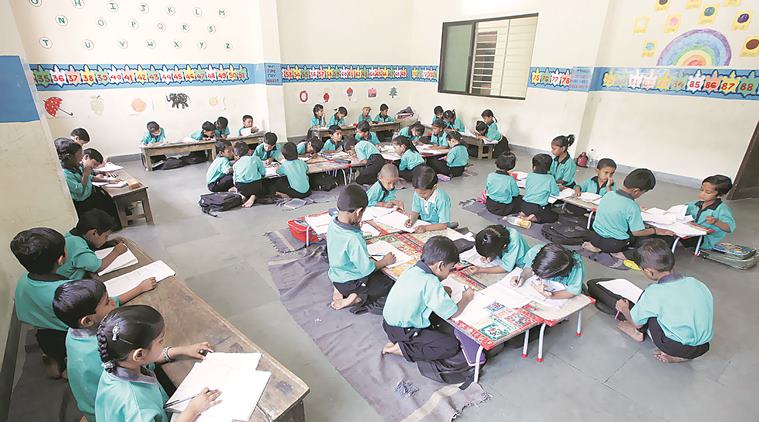
The draft New Education Policy (NEP) places great emphasis on language education. It identifies the benefits of children being multilingual, states how the knowledge of and fluency in English creates an elite group within the country and how knowledge of foreign languages can be beneficial to employability. This considerable attention and importance to language education in the draft policy goes all the way from primary education to the doctoral level.
The policy proposes that children from class 1 (age 6) onwards are taught three languages simultaneously. There is a proposal that one of the Indian classical languages (Malayalam, Tamil, Telugu, etc) is taught between class 6 and 8. An additional compulsory course is the “Languages of India” for all students at the upper primary level (class 6-8), which will cover all the major languages of India — a few phrases, their history, heritage and structure. At the secondary level (class 9-12), children will be able to chose one or more foreign languages. The new higher education policy envisages a liberal arts approach, which means that the continued learning of language will be possible (and, in fact, encouraged) throughout the degree programmes whether in science, engineering or medicine. Finally, those pursuing doctoral research will have to study how to communicate scientific aspects of their work in a local language so as to promote their ability to communicate outside their professional domain in an Indian language.
Research around the world has concluded that children are enthusiastic about learning new languages. Many European countries already teach up to three languages to their children at the primary level and it is understood that being multilingual has advantages not only for employment but also for intellectual development. If the NEP is implemented unchanged, Indian students will have the record of being prepared with the maximum number of languages when they leave school education. The question is: How well can such a policy be implemented in all parts of the country within a short span of time? The educational policy document has not delved into the question of how to translate the policy in the field. Good intentions alone cannot deliver the desired educational outcome.
Take the question of three languages being taught in primary school as an example. India has about 1.4 million schools imparting elementary education. Currently, they mostly impart education only in their mother tongue with a very small percentage that teach English at the elementary level. Assuming that one will need at least one teacher per school to teach one language, it will take at least one million English teachers and another one million teachers in other languages to have this policy implemented. While English language teachers could still be found locally, where will the teachers for the third language come from?
If 2,21,000 elementary schools in Uttar Pradesh need to teach a language in addition to English and Hindi, one would need 2,21,000 teachers of Malayalam, Tamil, Bengali, Gujarati, etc, to be available in UP. While it is true that children are enthusiastic and able to study many languages when they are young, the research also presumes that the teaching of such languages is also competent. Considering that our country still has 92,000 single teacher schools, will the single teacher then end up teaching English as well as another language? Can such teaching be efficient and competent? The net result could be that only students in urban areas and elite schools will be able to afford the full implementation of the policy.
The same holds true for foreign languages. As the curriculum provides option for learning a foreign language, urban and elite schools will soon have French, Spanish, German, Chinese, etc. in their curriculum. How soon can that be scaled across 1,35,000 secondary schools and 1,09,000 senior secondary schools? Do we have so many foreign language teachers in India? Will this proposal further widen the rural-urban, rich-poor divide in educational outcomes?
These apprehensions notwithstanding, I am very enthusiastic about the potential of the NEP on many aspects, including languages. If the government truly apply its mind, there are many ways to bridge this gap. For example, retired English teachers and English graduates can be mobilised in a nation-wide campaign to ensure that every child in India has access to English language. Undergraduate students from across the country can be given basic pedagogic training and “teach for India” scholarships to go and stay in another state and teach their language. India could offer1,00,000 scholarships to foreign nationals to come and teach their native languages (including English). All these will not only improve our language education but also broaden our perspective.
Technology, in many ways, is eliminating or at least reducing the importance of language learning. But in the interim, we can leverage technology to teach languages as well as improve the standard of language teachers.
The writer is Operations Manager, United Nations Environment Programme. The views expressed are those of the author and not necessarily that of the United Nations